1. It's how you say it
1.1. Create scannable text
1.1.1. Subheads
1.1.2. Bullets
1.1.3. Short sentences
1.1.4. Interactivity
1.1.4.1. Link is fundamental to web interactivity
1.1.4.1.1. People use links to browse to
1.1.4.1.2. Links suggest what's next, and people form strategies by reading them
1.1.4.1.3. Search engines use links to understand your content, the concepts behind it, and how it related to itself
1.1.4.1.4. People actually read links!
1.2. Offer multiple modes to get at content
1.2.1. Pictures
1.2.2. Graphs
1.2.3. Videos
1.2.4. Interactives
1.2.4.1. Browsable maps
1.2.4.2. Links
1.2.4.3. Calculators and Applications
1.2.4.4. Other cool stuff
1.3. Create a browseable site
1.3.1. Smaller chunks of focused information
1.3.1.1. Good for Google
1.3.1.2. Good for linking
1.3.2. Use web pages when you can
1.3.2.1. There are perfectly acceptable uses for PDFs
1.3.2.1.1. PDFs are great for things people plan to print and take with them
1.3.2.1.2. PDFs are fine to put online if you already have them and are going to support them with web pages
1.3.2.2. Regular HTML pages are often better than a PDF
1.3.2.2.1. PDFs are nearly never written for the web
1.3.2.2.2. PDFs a hard to link to and between
1.3.2.2.3. Search engines treat PDFs different than web pages
1.3.2.2.4. PDFs are a usability nightmare, even for savvy users
1.4. Use your visitor's language
1.4.1. Don't make up words
1.4.2. Ask people what they'd call things
1.4.3. Ask people how they'd organize things
1.4.4. Look at search analytics
1.4.5. Look at keyword tools (how do people search across the web)
2. More bad assumptions
2.1. There's no place for long copy on the web
2.1.1. There is a place for long copy on the web, it's just not on most pages. But even long copy should be easy to scan
2.2. There's no place for good writers online
2.2.1. Writing concisely is extremely difficult
2.2.1.1. "I'm sorry this is so long; I didn't have long to write it."
2.2.2. Writing clearly is extremely difficult
2.3. I can't get my message out in short sentences and bullet points
2.3.1. If no one reads your long, tortured prose, what's it getting you?
2.4. You're going to turn the web into a giant powerpoint
2.4.1. Yes, good presentation techniques help on the web
2.4.2. No, you can't treat web pages and presentation slides the same
2.4.2.1. You're not there to explain web pages -- they have to speak for themselves
3. It's what you say
3.1. Have a content strategy
3.2. distinguish between internally-exciting content and externally-interesting content
3.3. Why should anyone care
3.3.1. A technical section on a children's site
4. Motivating and Justifying facts
4.1. People skim, reading between 20 and 80 percent of your words.
4.2. People understand more when we use words and pictures
4.3. People spend 25-35 seconds on a home page, reading maybe 10 to 20 words (Nielsen pp 30)
4.4. If a user is interested, s/he'll scroll; however, users do not scroll when looking to navigate or when bored (Nielsen 100, Pirolli 168/9)
4.5. Pirolli
4.5.1. Visitors are goal oriented
4.5.2. Visitors need to see what's on a page early
5. Bad initial assumptions
5.1. The web is not a magazine
5.2. Your visitors are not leisure-readers
5.3. The web is not a powerpoint
5.4. People like to read online
5.5. The home page is what really matters
5.6. You know the language your visitors speak
5.7. You can control how people are going to browse
6. Useful assumptions
6.1. You only have a minute to get your message across
6.2. People are informavores
6.2.1. Informavores are hunting for information do perform a task
6.2.2. Informavores jump into a property a search engine to find a patch of juicy information to mine
6.2.3. Informavores forage by scanning and hopping from patch to patch with links
6.2.4. If a patch doesn't seem fertile, informavores will leave that property with search and look somewhere else

